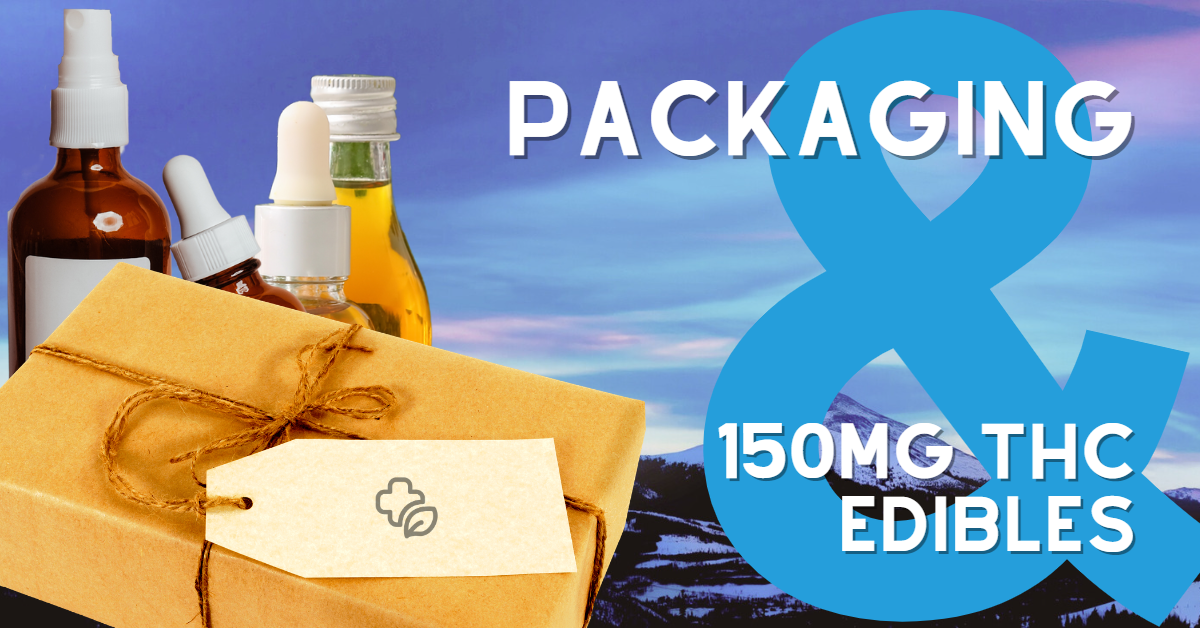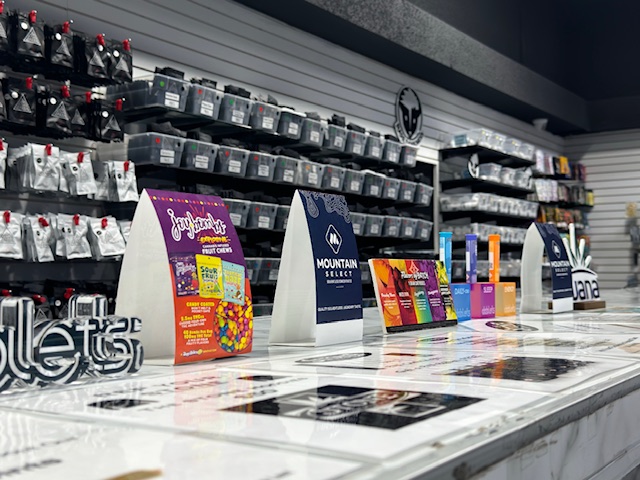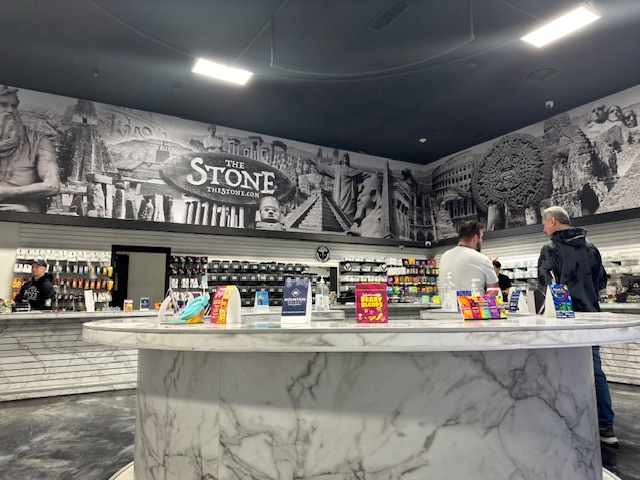
This website is for users aged 21 and over. Please confirm your age.

With the legalization of cannabis products, the regulatory authorities have strictly enforced the packaging and labeling requirements. This section will dive into the packaging and labeling requirements for 150mg THC edibles. We will explore the importance of complying with these regulations and provide an overview of the packaging and labeling requirements for cannabis products, providing valuable insights for producers and consumers.
When it comes to 150mg THC edibles, packaging and labeling compliance is a must. It’s a legal requirement to ensure users know what they’re consuming, how much, and how it may affect their health. Labeling can help people make informed choices and prevent misuse.
Packaging should be of high quality. It needs to protect the item and be child-proof and tamper-proof. Labels should be clear, including symbols, brand name, logo, THC and CBD content, and FDA-approved language.
Businesses need to comply with federal and state laws for cannabis products. Packaging and labeling should be part of any business strategy. That way, companies can ensure regulatory compliance and keep consumers safe.
In short, packaging and labeling compliance is critical. Companies need to understand the value of it. That’s how to comply with regulations, inform users, and protect people’s health.
When it comes to cannabis, packaging, and labeling are key. Regulations ensure consumers make informed decisions. A table can be a valuable tool for presenting the info.
…
Packaging must be child-resistant and tamper-proof. Brand names and logos must follow the rules. Labeling must show the THC and CBD content and use the standardized cannabis symbol.
Cannabis must comply with state-by-state regulations and the CSA. Not following the rules can lead to fines or seizures.
California’s Department of Cannabis Regulation has guidelines for oral concentrates, suppositories, and edibles. It’s vital to understand and follow these regulations for safety.
The regulations for cannabis packaging and labeling are constantly evolving, and understanding these laws is crucial for any cannabis business owner. This section will examine the federal principles outlined in the Controlled Substances Act and intricate state-by-state regulations for packaging and labeling cannabis products.
The Controlled Substances Act is an important law that deals with the making, selling, and using of controlled substances, such as cannabis products, in the US. Under this act, cannabis is classified as a Schedule I drug, meaning it is highly abused and has no accepted medical use. So, it is essential to adhere to federal guidelines for packaging and labeling cannabis products.
All cannabis products must obey the rules set by federal regulators for packaging and labeling. If not, companies can face severe fines or legal penalties. But, individual states may also have different product labeling and packaging regulations. That means following state and federal regulations, including 150mg THC edibles, is necessary for companies producing cannabis products.
Obeying state-by-state regulations for packaging and labeling can be difficult, but it is necessary for consumer safety and to stay on the right side of the law. So, companies must follow state and federal regulations when producing and distributing cannabis products in the US to avoid any adverse outcomes.
Creating a comprehensive table of state-by-state regulations for cannabis packaging and labeling is essential. It should include information about child-resistant packaging and what must be included on labels, like dosage and warning information.
For instance, California requires cannabis products to have a standardized symbol and specify THC content per serving/package, total THC content per package/serving, manufacturing date, and batch number code. Oregon does not need the standardized symbol but detailed warnings, such as “Do not eat” and “Keep out of reach of children.”
Manufacturers must review each state’s regulations before selling their products or face fines and the loss of a license. By following state-by-state rules, manufacturers can ensure product safety and provide accurate dosing and clear warning labels.
In summary, cannabis product makers must follow FDA guidelines for labels. This will guarantee a safe and legal product for the consumer.
FDA guidelines for cannabis product labels are essential for manufacturers to ensure compliance with regulatory standards. This section will discuss common requirements for cannabis labels and explore examples of FDA-approved language to help manufacturers meet labeling and packaging requirements for 150mg THC edibles.
Cannabis labels must follow specific requirements to ensure consumer safety and meet federal and state regulations. The FDA sets limits on wording, pictures, and text size. Here’s a summary of standard requirements:
| Product identity | Quantity must be accurate in the correct units. |
|---|---|
| Net weight/volume | The full list is needed for FDA regs. |
| THC/CBD content | Labels must show THC/CBD levels. |
| Ingredients list | Temperature range, light exposure, and moisture restrictions may be needed. |
| Storage instructions | Temperature range, light exposure, moisture restrictions may be needed. |
Note: States may have stricter rules than federal regulations. Lab test results, warnings about specific allergens, or other details may also be needed.
So, research local laws and FDA guidelines. Do regular internal audits to spot problems with the packaging.
The FDA has rules for cannabis product labels. Such as phrases to use and ones to avoid for consumer safety. They want milligrams of THC and CBD per serving listed. Plus, warnings of health risks and ingredients. False or misleading claims are not allowed, or it could be costly. State-level regulations may also apply. They could need extra warnings or symbols. Not following packaging and labeling requirements may result in fines or legal action. Therefore, child-resistant and tamper-proof packaging is a must.
It’s best to check the FDA-approved language when designing labels to ensure everything’s up to par.
Regarding the packaging of cannabis products, it’s essential to comply with strict regulations to ensure safety for all users. In this section, we’ll explore the packaging requirements for cannabis products, specifically focusing on child-resistant and tamper-proof packaging. We’ll also touch on the brand name and logo requirements that must be considered. These guidelines meet legal standards and protect consumers from misuse or accidental ingestion.
Manufacturers of cannabis must guarantee packaging is both child-resistant and tamper-proof. This is key for preventing kids from accessing the product and keeping it safe for consumers. It must be designed so kids cannot open it or show visible signs of tampering.
The safety of users, like 150mg THC edibles, is based on child-resistant and tamper-proof packaging. These products must not be wrong hands or harm those not intended to use them. Thereflaws like The Controlled Substances Act mandate secure packaging and labeling.
States may also have their requirements for cannabis packaging. For instance, the California Department of Cannabis Regulation sets standards for edibles, suppositories, and concentrates. Manufacturers must meet these standards to sell their products legally.
Branding CBD products must follow specific regulations. This is to protect consumers and ensure transparency. Packaging for cannabis must also include the brand name and logo. These logos mustn’t appeal to children, so no cartoon characters or animals.
California brands must submit their proposed logo designs to the Department of Cannabis Regulation before selling products.
Bright colors and clear fonts can help logos stand out. No pictures of objects or animals associated with children’s advertising! A unique mark can be designed that doesn’t resemble other cannabis companies’ logos. This allows consumers to easily differentiate between companies – without promoting the product to non-adults.
Labeling cannabis products is crucial to ensure customer safety and comply with local laws. This section will explore the specific labeling requirements for cannabis products, including the mandatory use of standardized cannabis symbols. We will also discuss the importance of displaying accurate THC and CBD content on labels and provide examples of how to display total THC/CBD content.
The importance of the cannabis symbol is immense when labeling cannabis products. It must be displayed on all products, like edibles. The character is a red triangle with an exclamation point in the center and a black border. It must be at least half an inch by half an inch and have “CONTAINS THC” or “CONTAINS CBD” underneath or beside it.
Creating a table can help explain it better. This table will have two columns. One will show the symbol, and the other will list its details.
| Symbol | Details |
|---|
It’s worth noting that additional requirements may be needed for this symbol, depending on where you are. Different states have different rules, like color and placement on the Label. Abide by all state regulations to avoid any legal troubles.
Ensuring compliance with regulations requires displaying THC and CBD content on cannabis product packaging and labels. This informs customers of the potency they are buying and consuming. Showing this info in a table with columns for THC, CBD, Total THC, and Total CBD is effective. Plus, the standardized cannabis symbol must be visible.
State regulations may differ in how this info should be presented. For instance, in California, edibles must list the total THC in milligrams per serving or dosage.
Manufacturers must accurately display THC and CBD content to prevent overconsumption. Regulations guarantee consistency across products; complying with them is essential for legal compliance and keeping consumers safe.
When buying cannabis products, knowing the THC and CBD amounts in each dose is essential. Labels must show both total THC and CBD, plus the THC and CBD in a single serving. Plus, the standardized cannabis symbol must be on the packaging. Check out the table below for examples of THC, total THC, CBD, and total CBD on labels.
| Item | Amount |
|---|---|
| Total THC | 150mg |
| THC per serving | 10mg |
It’s critical to display this info on all cannabis product packaging. This helps people make informed decisions on the amount of active ingredients in each dose. In addition, various states may have different labeling rules beyond federal ones. So, it’s critical to stay up-to-date on state laws when selling cannabis products.
California has strict regulations for the packaging and labeling of cannabis products, including edibles that contain 150mg of THC. This section will explore the state’s different packaging and labeling requirements, such as those set by the Department of Cannabis Regulation. Additionally, we’ll delve into the specific requirements for child-resistant packaging for individual cannabis products and orally-consumed concentrates.
The Department of Cannabis Regulation has set strict regulations for cannabis product manufacturers. These are vital for making sure products are safe for consumers. Packaging and labeling requirements play an essential role in meeting standards.
Companies must comply with the requirements. For example, child-resistant packaging must be used for all individual cannabis products. To reduce oxygen, moisture, and light exposure, oral concentrate, suppositories, and edibles must be packaged.
Compliance is mandatory in California. Packaging size and labeling content guidelines must be followed before products are released. Adhering to these regulations is necessary to guarantee consumer safety and avoid harm from non-compliance.
Child-Resistant Packaging is necessary for cannabis-infused products, especially those with 150mg THC. This helps protect young children from accidentally ingesting these items that could harm them.
Retailers must use packaging that meets requirements from Federal and State rules. It must have a locking mechanism and no easy way of opening it.
Cannabis Retailers must use special child-resistant packaging authorized by their State’s Department of Health Services (DHS). Laws vary from state to state.
California-based companies must follow California’s Bureau of Cannabis Control rules before adhering to other state guidelines.
The CDC reported 312 calls to Poison Centers about kids <18 years experiencing harmful exposure to cannabis products in 10 US states during 2018-2019, according to Purple Noodle.
A report by GlobeNewswire has predicted that the global cannabis-infused edible product market will reach $4.5 billion by 2022.
Packaging for orally consumed concentrates, suppositories, and edible products needs special attention. Child-resistant, tamper-proof packaging is essential to protect kids from accidental ingestion. It must also maintain product quality and freshness.
Labels must show usage instructions and warnings against overdose. Allergen details and ingredients list should be visible. A table with the require packaging requirement is include.
Tamper-proof and child-resistant packaging with dosage info, expiry date, and the ingredients list is a must to guarantee safety throughout production, transportation, and consumption.
To sum up, adequate packaging for orally consumed concentrates, suppositories, and edible products is necessary for consumer safety and to stop kids from accidental ingestion.
Packaging and labeling are essential for 150mg THC edibles. They must follow legal regulations and safety standards. Labels provide information such as ingredients, dosage, and warnings. Tamper-proof and child-resistant packaging prevents accidental consumption. Labels inform consumers of product origin, dosage, and allergens. Recommended dosage and serving sizes help to avoid accidental ingestion of high doses and adverse reactions.
Therefore, ensuring the packaging and labeling of 150mg THC edibles comply with legal and safety standards is essential. This keeps unintended users away and ensures consumer safety.
According to the Department of Cannabis Regulation, 150mg THC edibles must be packaged in child-resistant and tamper-evident packaging that is opaque and resealable. The primary Label must contain the company’s brand name and an informational panel that includes the amount of THC per unit, total THC and total CBD content, and a statement of identity. The label design must adhere to guidelines mandated by the FDA for food products, including a nutrition facts table.
Child-resistant packaging is designed to make it difficult for children to open and access the contents of a package. It is required for all individual cannabis products, including 150mg THC edibles, to prevent accidental ingestion and harm to children.
The informational panel is a part of the Label that provides essential information about the product, including the amount of THC per unit, total THC and total CBD content, and a statement of identity. It is essential for all cannabis products, including 150mg THC edibles, to help consumers make informed decisions about their consumption.
THC refers to the amount of active delta-9-tetrahydrocannabinol in the product without heating, while total THC refers to the amount present after heating the product. Both measurements must be on a 150mg THC edible label.
Manufactured 150mg THC edibles must be packaged as finished products before transfer to a distributor to prevent contamination and exposure to harmful substances. The Label must adhere to FDA guidelines for food products and include a nutrition facts table. The primary title must contain the company’s brand name. This informational panel consists of the amount of THC per unit, total THC and total CBD content, and a statement of identity.
The standardized cannabis symbol is a graphic that represents a stylized cannabis leaf inside a red on the labels of all cannabis products that contain ten micrograms or more of THC. This symbol is not explicitly vital on the Label for 150mg THC edibles but is necessary for any product that meets the THC threshold.
We warmly welcome you to explore our highly acclaimed strains, concentrates, and edibles. Serving recreational clients with pride is our passion.
At our dispensary, you'll find a professional yet inviting atmosphere that prioritizes your comfort and privacy. Feel free to stop by at your earliest convenience to experience it for yourself. We can't wait to serve you!


